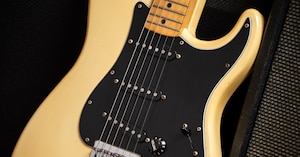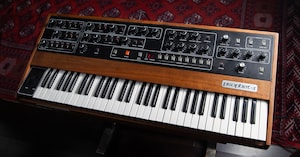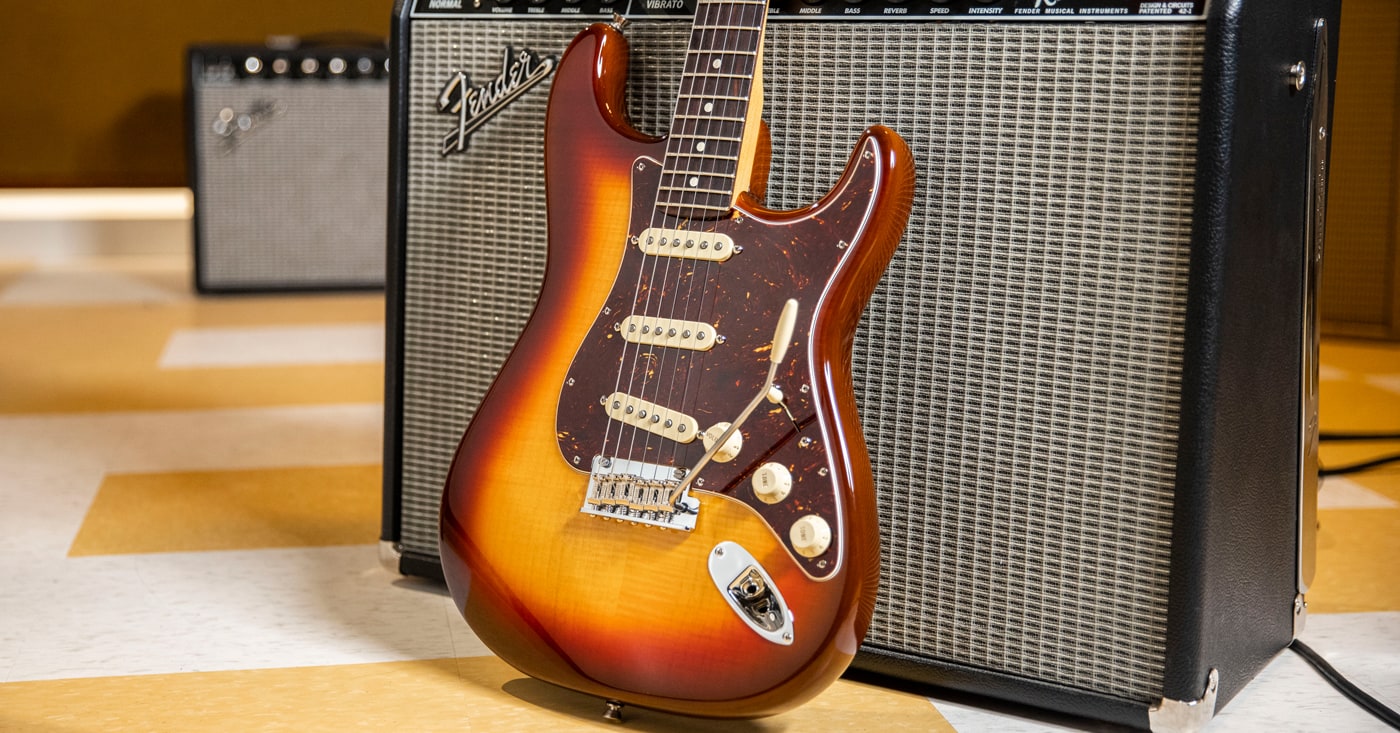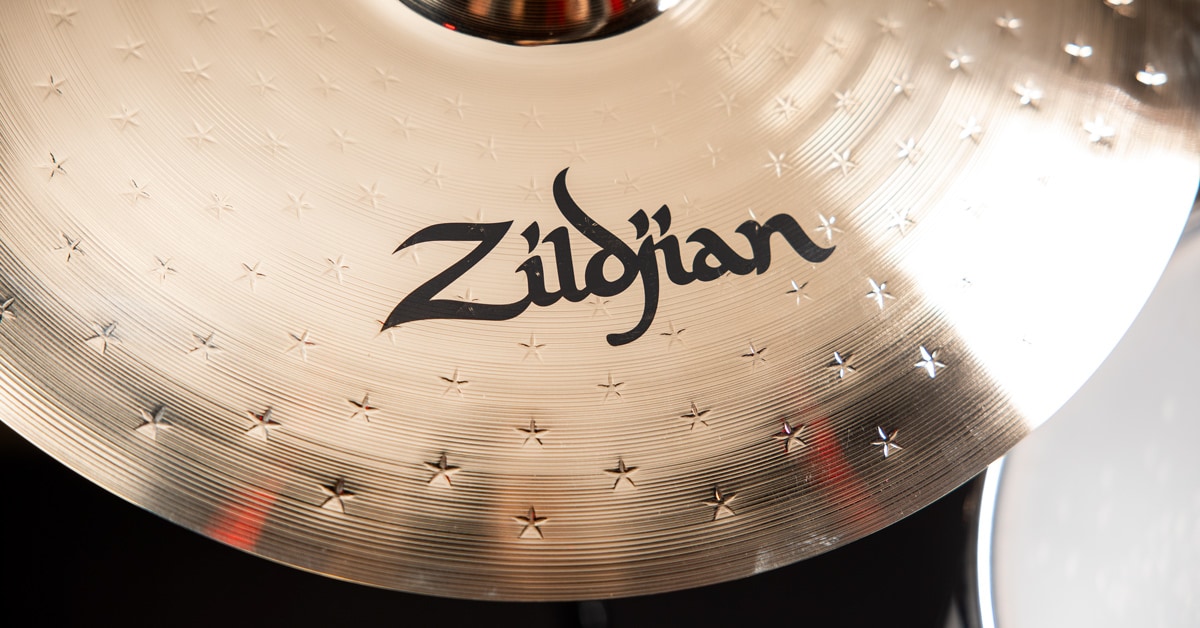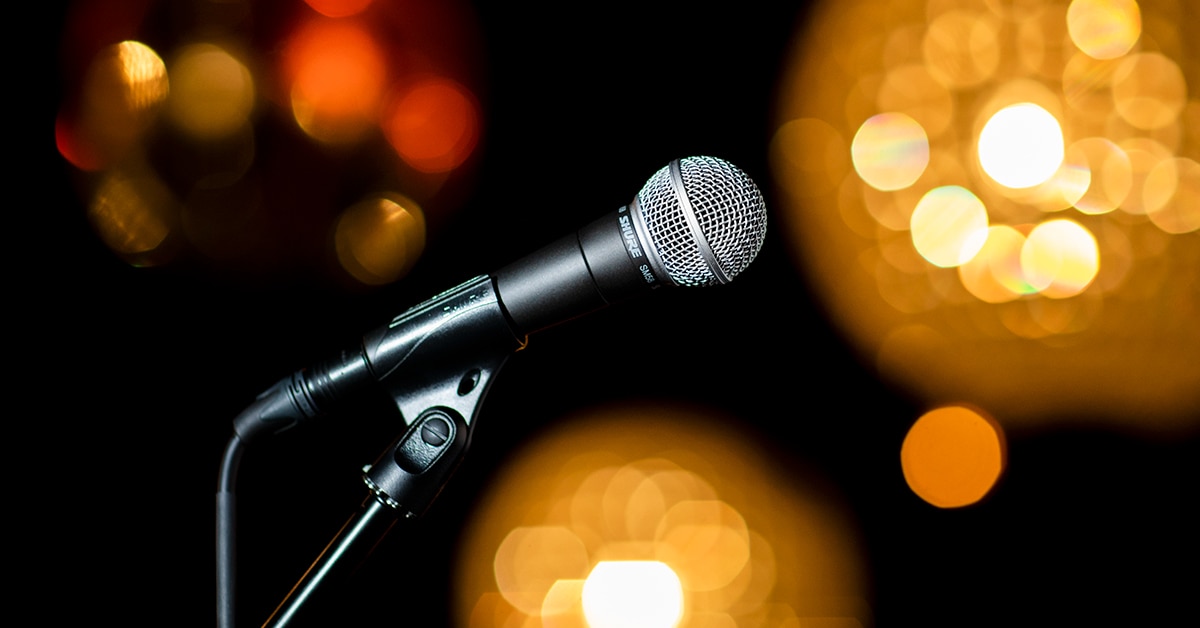Singing live is nothing like the studio. The stage has no vocal booth, no second take, no mixing and mastering after the fact. You need to deliver a performance for the audience, on the spot. And to do that, you need the best microphone for the job.
We put together a list of the ten best live vocal mics out there right now, from standbys like the Shure SM58 to exotic picks like the Earthworks SR314. We looked at essentials like durability and sound quality, while leaving room for the subjective stuff, too. How could we ignore the timeless look of the Super 55?
If you just want the list, go ahead and scroll down. But you might be wondering: What makes for a good vocal mic? We’ll give you a very quick primer.
Table of Contents
Live Vocal Mics: What’s the Difference?
The Trusted Choice: Shure SM58
The Best Middle Ground: TELEFUNKEN M80
For Classic Warmth and Presence: beyerdynamic M88
For Handling the Noise: Shure Nexadyne
For the Perfectionist: Earthworks SR117
For Clarity and Class: Earthworks SR314
For the Touring Musician: sE Electronics V7
Another Trusted Choice: Sennheiser e 835
For a Vintage Touch: Shure Super 55
For the Pros: Neumann KMS 105
On the Cutting Edge: Shure KSM8
Don’t Forget the Accessories
Live Vocal Mics: What’s the Difference?
As a singer on stage, you need to balance a lot at once. You have to connect with the audience, mesh with your bandmates and keep your energy up, all while sounding good. Your vocal mic needs to do the same thing. It has to, well, perform. So, the right stage microphone for you will depend on what kind of performer you are.
Almost all vocal mics have one thing in common: cardioid-type polar patterns. This means they only pick up sound from the front. It’s essential for blocking crowd noise and avoiding feedback from amps and monitors. Cardioid mics come in three main types, based on how wide an angle they accept sound from. Cardioid mics pick up about 130 degrees, supercardioid mics take about 115 degrees, and hypercardioid mics go all the way down to 105 degrees. Wider patterns let you move around more and still be heard, but since they’re listening to a wider area, they also pick up more noise. So, to find the right mic, you need to balance 1) how much sound isolation you need, and 2) how much you move while performing.
Live vocal mics come in two main types: dynamic and condenser. These each have their own pros and cons. Most of our choices are dynamic mics, due to their natural sound, tolerance for loudness, ruggedness and amazing value. When you see Paul McCartney play an arena, he’s probably using the same Shure SM58 dynamic mic you can buy at Guitar Center for a surprisingly mild price. We also included two condenser mics, which are sensitive to a wider range of frequencies, boosting the more subtle parts of your performance. If you’re a quiet singer who needs to be heard clearly, a condenser might be for you. The downside to this sensitivity is that the mic may pick up sound you don’t want. Condensers are also more expensive. Both condenser mics on our list, the Neumann KMS 105 and Earthworks SR314, go for well over $500. Consider your singing style to decide which type is best for you.
From there, each mic becomes unique. They respond to different frequency ranges, giving different flavors to the sound. The choice comes down to the material. For instance, a pop artist might want a wide frequency response to capture those soaring vocals. Other singers might want to mellow their voice with a narrow response, maybe for folk or roots music. Equally important is how each mic responds within its frequency range. Some will have peaks at certain frequencies. Think about the parts of your voice you want to accentuate or dampen. When you’re looking at mics, check out the frequency response chart to see if it matches those preferences. The right microphone will shape your vocal sound, night after night, becoming a trademark of your live performances. Read the list for recommendations.
Note: Some of these mics have both wired and wireless versions. If your choice only has a wired XLR option, consider the Xvive U3 and U3C, or this Sennheiser XSW-D set, which can turn any XLR mic into a wireless one
The Trusted Choice: Shure SM58
The Shure SM58 dynamic microphone is the industry workhorse. Introduced in 1966, it added a grille to the classic SM57, making it better for live vocals. In the decades since, the SM58 has been a steady presence on stage with the world’s biggest performers. That includes rock legends, rappers, pop stars and metal bands alike, who trust it to deliver natural vocal sound while standing up to the rigors of touring. But the SM58 is no elitist—this mic is for the people. Due to its durability and low price, you’re as likely to find it in a karaoke bar as an opera house.
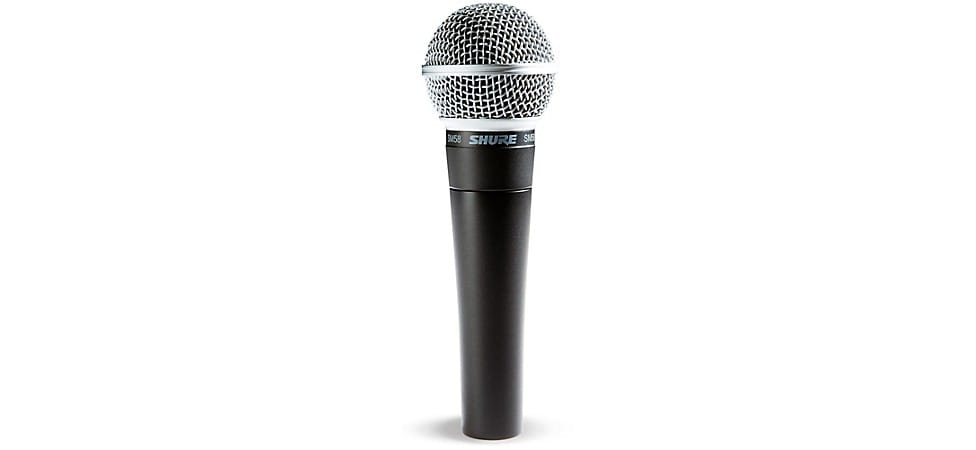
Pictured: Shure SM58 Dynamic Microphone
We’re not kidding about the durability. Take it from Roger Daltrey, who wrecked stages all over the world with The Who: “I’ve found this microphone to be absolutely remarkable, and no one is more abusive to a microphone than I am.”
When it comes to specs, you can consider the SM58 “right down the middle” in terms of dynamic mics. It has a forgiving cardioid polar pattern, which lets you vary your distance and angle while keeping your voice isolated. The frequency range is 50Hz to 15kHz, which will sound familiar to audiences—they’ve likely been hearing this mic for most of their lives. Basically, if you’re looking for a live vocal mic and don’t want to overthink it, you can grab an SM58 and feel good about it. Easy.
If you want a more refined sound, Shure makes the BETA 58A, which brightens the middle frequencies and bass roll-off to give more presence to vocals. It also has a supercardioid pattern to cut out more noise and focus on your voice.
The SM58 is available wireless, with both the Shure GLX-D and SLX-D configurations. The same goes for the BETA 58A
The Best Middle Ground: TELEFUNKEN M80
Not sure if you want a dynamic or condenser mic? The TELEFUNKEN M80 makes the choice a little easier. It has the high-SPL tolerance of a dynamic mic, with a frequency range that’s closer to a condenser. On the low end, the M80 goes all the way down to 30Hz, compared to the usual 40Hz or 50Hz for dynamic mics. It also goes up higher, to 18kHz, making for the widest frequency range from any dynamic mic on this list. Combine this with the supercardioid pattern, and you get crisp, airy, nuanced vocals on stage—the kinds of adjectives you normally use for a condenser.
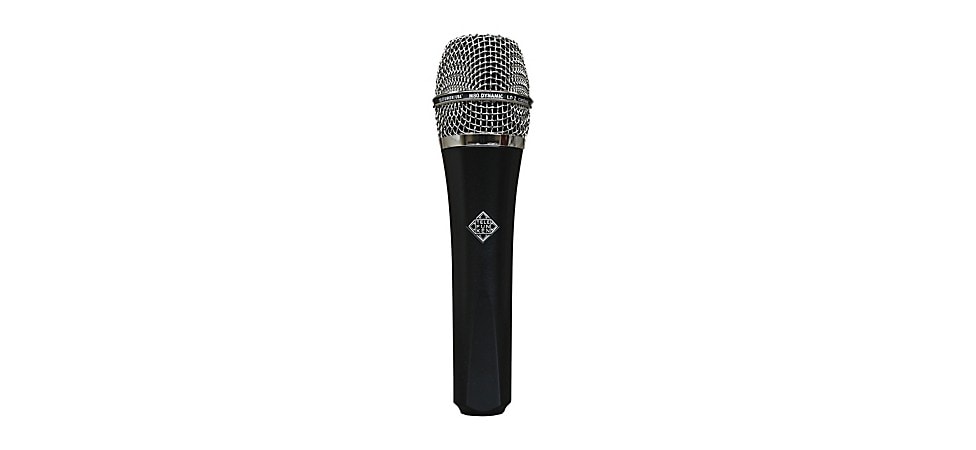
Pictured: Telefunken M80 Dynamic Microphone
With a frequency response (and price) sitting between the cheaper dynamic mics and the most expensive condensers, the TELEFUNKEN M80 makes for an excellent middle ground. It’s also got style points, with six finishes available, including wood grains, colors and metals. And, of course, there’s that iconic TELEFUNKEN logo.
For Classic Warmth and Presence: beyerdynamic M88
The beyerdynamic M88 hypercardioid dynamic is a favorite choice of vocalists and sound engineers alike, for its accuracy, warmth and clarity. Equally facile at capturing instruments like brass, woodwinds, drums and guitar amps in addition to vocals, the M88 delivers studio-grade sound on any live stage. A big attraction of the mic is its consistent performance across a wide range of stage and studio environments. It's also designed to stand up to the trials, travails and punishing dB levels of touring without sacrificing the pristine audio quality you demand.
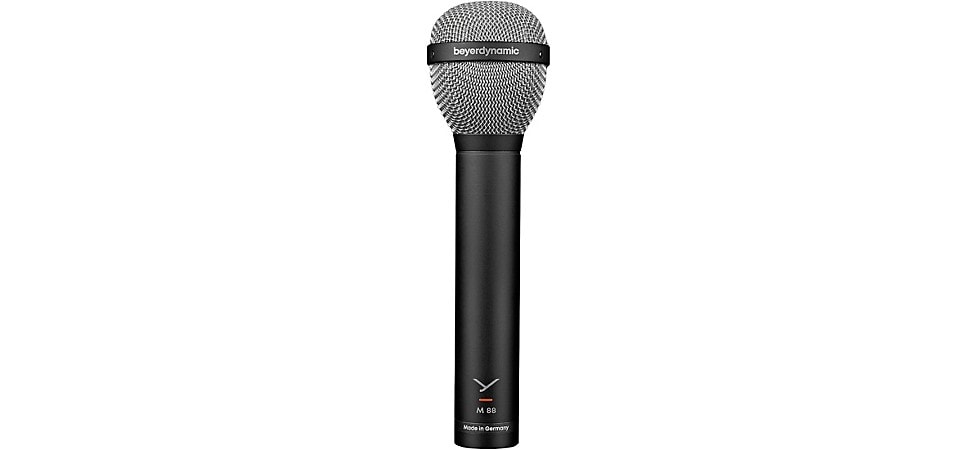
Pictured: beyerdynamic M88 Hypercardioid Dynamic Microphone
For vocalists and instrumentalists who demand both the highest audio quality and incredible durability, and are willing to make the investment, the beyerdynamic M88 is a true standout. With a sound that's characterized by rich, detailed low end, a clear, defined midrange and treble response that's crisp without being harsh, this mic will capture every nuance of your vocal performance, while offering superior feedback resistance, even in the most demanding environments.
For Handling the Noise: Shure Nexadyne
All dynamic mics can handle intense vocals, but the Shure Nexadyne series uses unique technology to take it to another level, making it an excellent choice for more aggressive vocalists for rappers, beatboxers and growling metal singers. Available in cardioid and supercardioid handheld versions, the Nexadyne delivers state-of-the-art sound with less risk of feedback, no matter what is going on around you. Shure's unique transducer design also virtually eliminates handling noise, without the need for internal shockmounting, making for a more compact and lightweight mic.
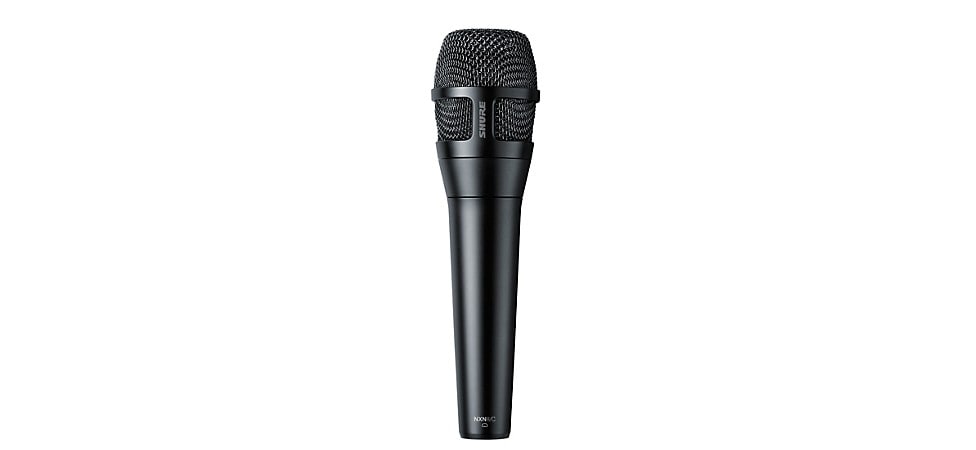
Pictured: Shure Nexadyne Cardioid Dynamic Microphone
What makes the Nexadyne unique is Shure's patented Revonic transducer technology. By using a pair of precision-calibrated transducers working together, this provides an exceptionally linear polar pattern and a huge reduction in handling noise, without needing any additional mechanical isolation. This also results in an incredibly natural-sounding vocal quality with superior off-axis rejection in the NXN8/C cardioid version. The NXN8/S supercardioid delivers a more focused polar pattern, increasing off-axis rejection and helping ensure that your vocals can cut through the mix all the way to the last row. Designed for modern stages, where digital processing is most common, the Nexadyne delivers authentically warm and natural vocal quality. Best of all, especially if you're a touring pro, Nexadyne mics are designed to live up to Shure's "drive a truck over it, then get on stage" reputation—not that we recommend you try doing that, but accidents do happen.
Both the cardioid and supercardioid Nexadyne are also available as capsules for your wireless mic setup.
For the Perfectionist: Earthworks SR117
Providing the exemplary level of clarity and detail their mics are known for, at a very competitive price, the Earthworks SR117 is a handheld condenser mic that's built to handle the rigors of the road. With an extended and amazingly flat frequency response, this one will present your voice exactly as it is, allowing your (or your front-of-house sound engineer) to tailor the final sound precisely to your needs.
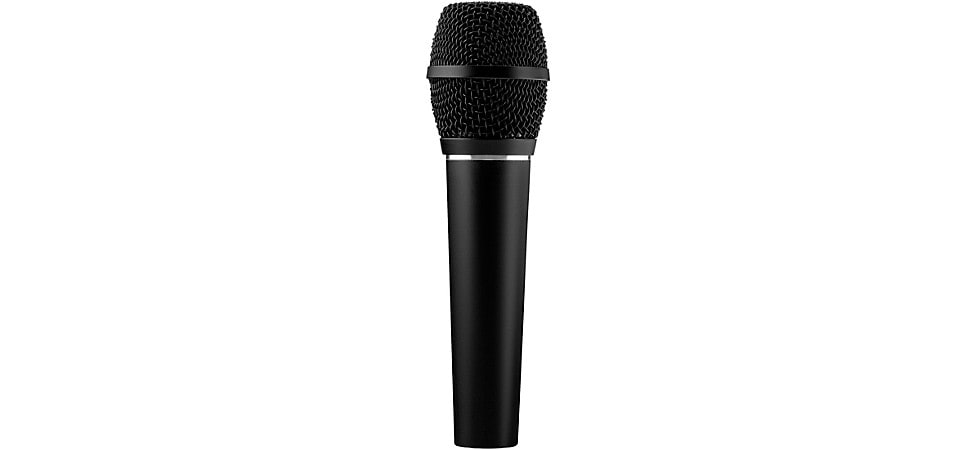
Pictured: Earthworks SR117 Supercardioid Condenser Microphone
Known for their calibration systems, and extraordinarily accurate measurement and studio mics, Earthworks created the SR117 to be an accessible choice for any working musician whether touring arenas or local coffeehouses. The fast transient response and wide frequency response delivers an incredibly open and natural sound that requires minimal EQ and processing. The tight cardioid pattern ensures excellent off-axis rejection for high resistance to feedback, even on loud stages. It's also an excellent choice for studio vocals, especially in rooms that are less than perfectly acoustically treated.
For Clarity and Class: Earthworks SR314
The Earthworks SR314 is perhaps the most beautiful microphone on this list, and the beauty isn’t skin deep. This is an unapologetically high-end condenser mic that reproduces vocals with stunning clarity and balance. It picks up frequencies higher than any mic you’ll see here (up to 30kHz!), and the transient response is lightning fast. The SR314 grabs every nuance of your voice and projects it with undeniable presence. This is not a mic for the faint of heart.
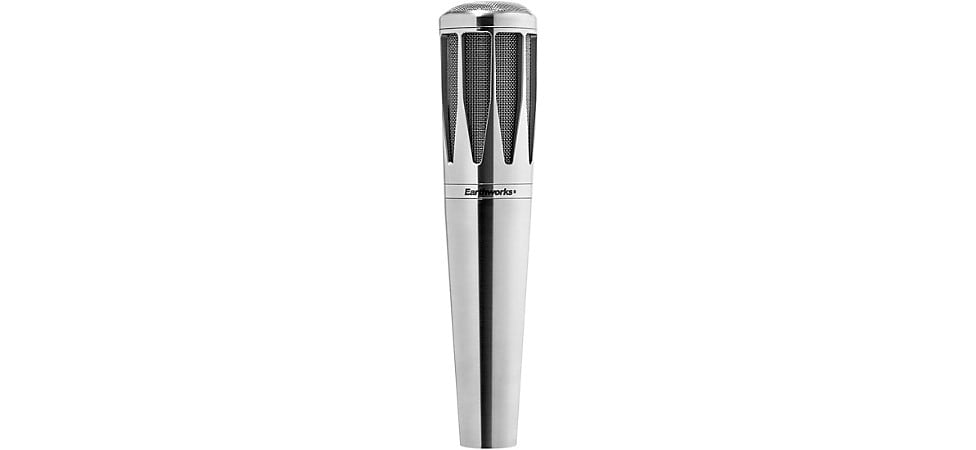
Pictured: Earthworks SR314 Cardioid Microphone
Like other Earthworks mics, the SR314 has one goal above all: accuracy. The small diaphragm captures your natural voice in every detail, while the high-quality condenser boosts it through the mix without distortion or color. The off-axis performance is forgiving, keeping vocals level when you move your head, while outside noise fades into the background. If you are proud of your voice and want it heard clearly by everyone in the audience, you’ll love the Earthworks SR314.
Plus, well, just look at this thing. The body is polished stainless steel. It looks like it’s from the past and the future at the same time. Very cool.
For the Touring Musician: sE Electronics V7
The sE Electronics V7 is our pick for touring vocalists, thanks to a killer combination of sound quality, durability, affordability and some extra tricks for the road.

Pictured: sE Electronics V7 Dynamic Microphone
First off, the value is impressive. The V7 is among the most affordable mics on this list, but contains high-quality components, including a supercardioid capsule and neodymium magnet—good for high-output, isolated vocals. It also picks up a wide frequency range, from 40Hz up to a sky-high 19kHz. This is due to a lightweight aluminum coil to go with the magnet.
That would all be enough to recommend the mic, but for touring musicians, there are some extra benefits. The body is made from a lightweight, durable alloy that contains zinc. The XLR connection is gold plated to prevent corrosion. And, in a clever touch, there are flat bevels around the edge, so the mic doesn’t roll away when you put it down. sE Electronics really put thought into this mic. That’s why you’ll see it in the hands of major artists like Billie Eilish and Chris Stapleton.
We love the red windscreen, but if you don’t, no worries—it comes with a black one, too. And for a premium feel, there’s also a version with a chrome body.
For wireless use, sE Electronics makes capsules designed to fit third-party wireless bodies. The MC1 is designed for Shure wireless. The MC2 is for Sennheiser.
Another Trusted Choice: Sennheiser e 835
The Sennheiser e 835 could have just as easily been at the top of this list. Made by one of the most established names in microphones, the e 835 is similar to our first entry in both cardioid pattern and frequency response (though a bit wider). It’s good enough for some of the world’s biggest artists and affordable enough for just about anybody. So, we’ll say the same thing: If you want a high-quality mic you can rely on, and you don’t want to overthink it, you can be confident in the Sennheiser e 835.
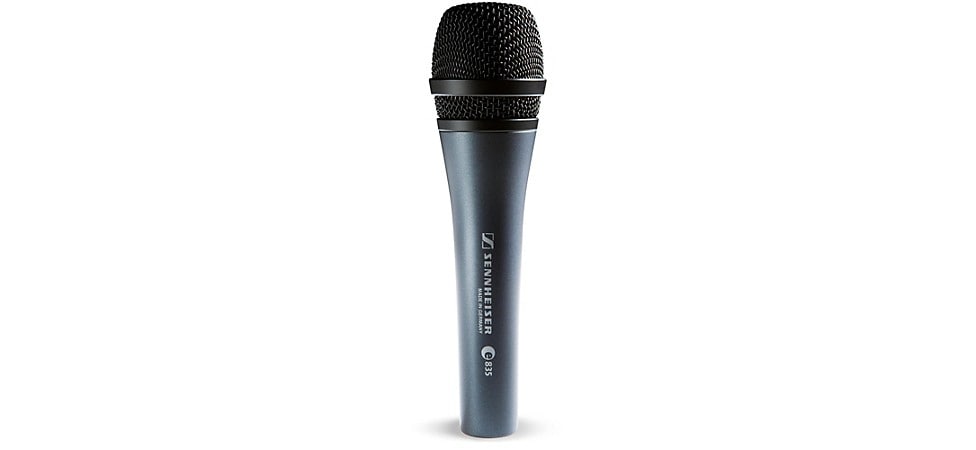
Pictured: Sennheiser e 835 Cardioid Dynamic Microphone
Is it durable, you ask? Sennheiser covers the e 835 with their 10-year warranty, so it's safe to say they're confident about the durability of this mic. We are, too. If you want to take Sennheiser’s side in the Great Mic Wars, you’ll be in good shape. We won’t take a side.
Some convenient extras: You can buy the e 835 in a pack of three to equip your whole band. It’s also available with an on/off switch.
Not to be outdone, Sennheiser also has a worthy competitor to the BETA 58A in the Sennheiser e 935, a high-output variant with a neodymium magnet.
One benefit of Sennheiser is that they have their own wireless systems. You can buy a Sennheiser ew 100 G4 system with the e 835 included. There’s also their new EW-D line, which combines the convenience of digital wireless with the best dynamic range, latency and battery life ever seen in a system of its kind.
For a Vintage Touch: Shure Super 55
If you dig vintage look and sound, but don’t want the hassle and expense of a vintage mic, the Shure Super 55 is for you. On the inside, it shares components with the BETA 58A, Shure’s high-performance vocal mic. On the outside, it shares a chrome die-cast casing with the classic Unidyne 55. Even if you don’t know the Unidyne 55, you’ll recognize its distinctive casing in photos of early rock ‘n’ roll pioneers. The Super 55 gives you modern electronics, but still gives you a piece of that vintage style. Be warned: If you use this mic, you will get comments—some admiring, some jealous.
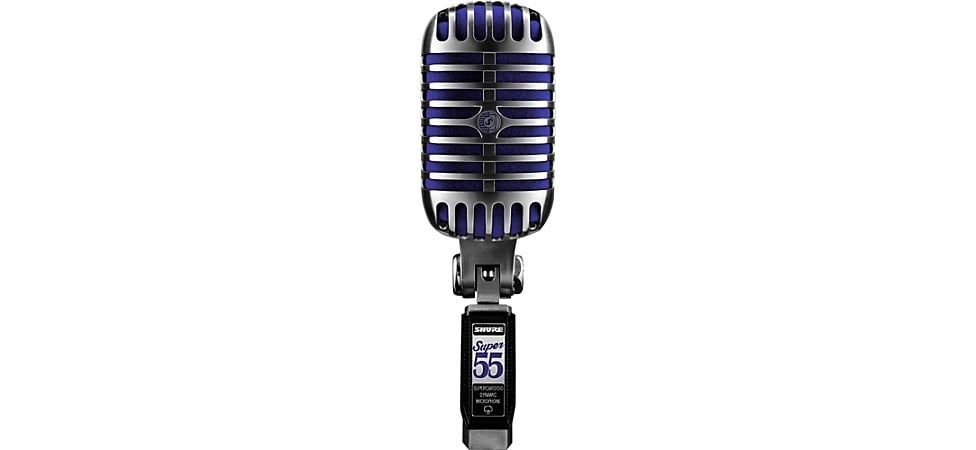
Pictured: Shure Super 55 Dynamic Microphone
Like its famous predecessor, the Super 55 is designed to stay on a stand. The capsule is shock mounted in the center of the steel outer casing, so you are free to swing the stand around and get funky—if that’s the kind of thing you’re into, of course.
Important note: This mic has a higher frequency response than other mics on this list. Most dynamic mics are going to sit between 40 and 50Hz on the bottom end. This one starts at 60Hz, but goes all the way up to 17kHz, nearly as high as the TELEFUNKEN. This is not a shortcoming, mind you, but a feature. It helps give this mic a vintage tone and reduced proximity effect, while still keeping things crisp.
For the Pros: Neumann KMS 105
Neumann needs no introduction. The most prestigious studios in the world trust the company's condenser mics to record with incredible accuracy, detail and warmth. The Neumann KMS 105 vocal mic does the same for live performers. The capsule is based on the K50, found in vintage Neumann mics that run into five figures on the secondhand market. It doesn’t disappoint. Simply put, if you are a professional who wants the absolute best stage condenser microphone you can get, the Neumann KMS 105 is tough to beat.
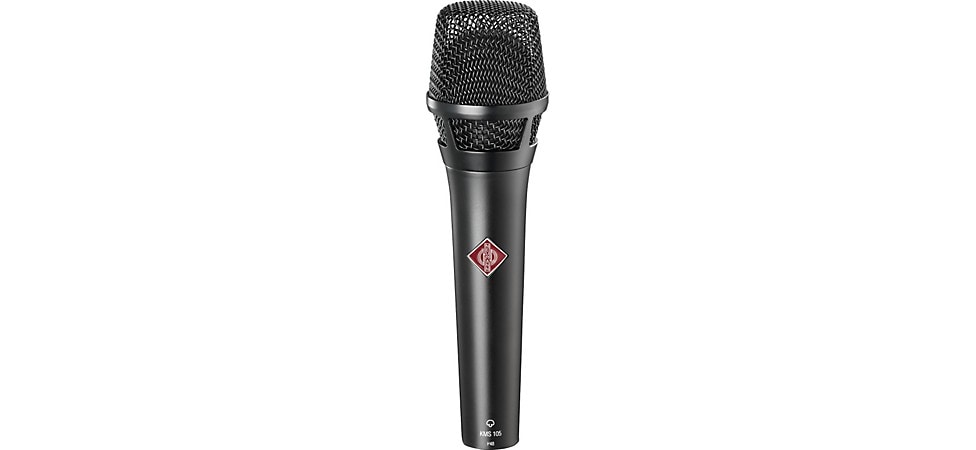
Pictured: Neumann KMS 105 Microphone
Can’t decide between the Earthworks SR314 and the Neumann KMS 105? Get both! Just kidding. These mics both sound spectacular, so the choice will come down to preference. The Earthworks is cardioid and the Neumann is supercardioid. Both being condensers, they excel at picking up your voice through the noise. The biggest difference will be the frequency response. The Neumann picks up 20Hz–20kHz, pretty much the industry standard for condensers. Earthworks believes in a wider response, at 20Hz–30 kHz. If you share their pioneering spirit, go with them. If you want a time-tested classic, go with Neumann.
Important note: Both the Earthworks and Neumann are serious condensers that need to be respected. If you get too close, the proximity effect is real. Neumann seems to have the more intense of the two. You might need to adjust to find the distance that feels right. But hey, that’s why we say it’s for the pros.
On the Cutting Edge: Shure KSM8
Dynamic mics change very slowly over the years, relying on the same simple design: diaphragm, coil, magnet. That’s what makes them so cheap and reliable. It’s also, well, a bit stale, don’t you think? Enter the Shure KSM8, a genuinely new type of dynamic microphone introduced in 2016. Through an inventive process that took Shure seven years to develop, the KSM8 virtually erases proximity effect and tightens the polar pattern even further. It’s our pick for people who want the latest technology and are willing to pay top dollar for it. If that’s you, keep reading.
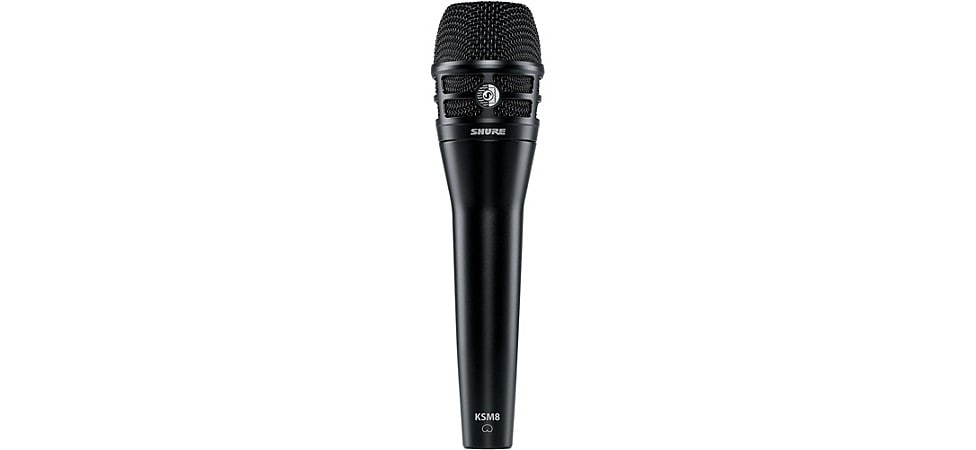
Pictured: Shure KSM8 Dynamic Microphone
Okay, now it’s just us nerds. Let’s get into the weeds. Shure refers to the KSM8 as a Dualdyne mic, in contrast to the Unidyne, the early predecessor to the SM58 and SM57. That’s because it has two diaphragms. The first is relatively normal, but with the addition of new “sound diffracting plates” which better protect it from plosives and knocks. But the second diaphragm is the real innovation. By selectively picking up certain frequencies and blocking out others, this second diaphragm is able to eliminate the proximity effect that happens when you get close to the mic. It also seals off the rear chamber of the mic, preventing off-axis noise better than any Shure mic before it. These two benefits combine to give this mic a bigger “sweet spot” than single-diaphragm mics. It ensures the kind of natural, flat frequency response you expect from a condenser, even when your mic technique isn’t perfect.
Speaking of technique, Shure included a fun psychological trick: The outside of the mic has a grille that makes it awkward to hold around the capsule. Many singers have the bad habit of holding their mic this way. It hurts sound quality. The KSM8 encourages you to hold it around the base, by making that the most comfortable.
Fitting all this new technology into the capsule required a bottom-to-top rethinking of the design, plus some cutting-edge components. All that R&D is reflected in the price. It’s the most expensive dynamic mic on this list. But it’s cheaper than the condensers and offers some of the same benefits. So, it’s arguably worth it.
Don’t Forget the Accessories
There’s nothing worse than getting a brand-new piece of gear without the accessories you need to use it. Make sure to stock up on cables, get a stand and a case or bag. Also, if you want to go wireless, be sure to check which transmitters your choice is compatible with. Some of the most popular mics can be bought as part of a complete wireless system, saving you any compatibility problems in the future.
For any other questions, our Gear Advisers are only a call away.


